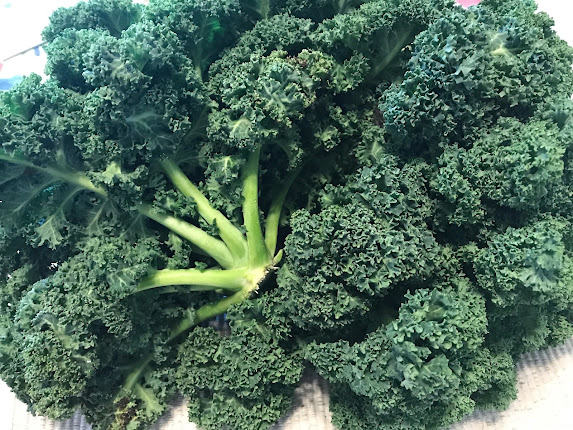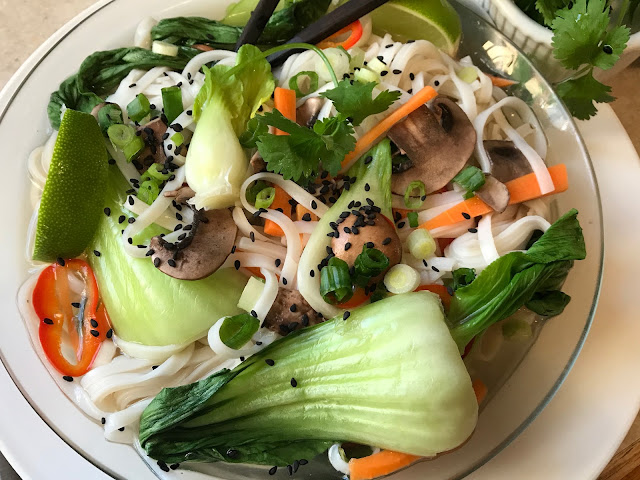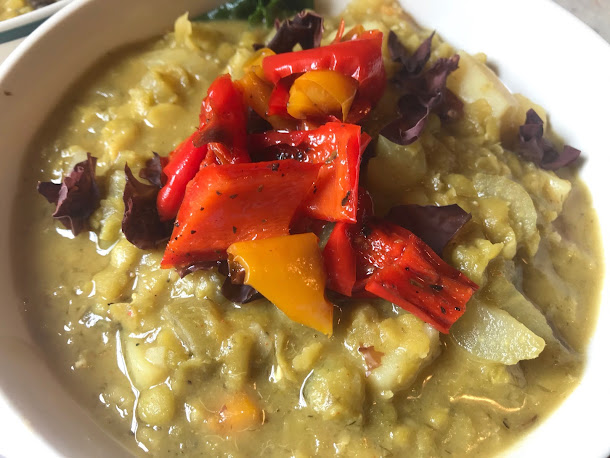The Spring Diet: Go Green! How To Maintain A Healthy Liver - Chinese Five Elements Part 3
The Spring Diet: Lighter, Fresher & More Green!
The Spring Diet is fresher, lighter and more green ~ aiding your Liver’s ability to detoxify from unwanted excesses accumulated over the Winter. Harmonizing our food choices and preparation methods with seasonal fluctuations helps us remain more resilient and healthy throughout the year.
According to Chinese Five Elements Theory, Spring energy moves up, like new shoots bursting through the hard packed soils. Therefore, as Bob Flaws points out in his book, Prince Wen Hui's Cook, Chinese Dietary Therapy, the Spring diet should emphasize foods with this upward movement, namely "green sprouting, above ground vegetables."
Generally speaking, the spring and summer diets are more suitable to consuming more cooling, cleansing foods than during the colder months.
Whether you want to detox, shed some excess fat ~ or cleanse your mind of toxic thoughts and emotions ~ nourishing your Liver (& Gallbladder) with a lighter Spring Diet is a great place to start.
Soak up even more healing green energy as Spring flowers blossom, and the forest goes green.
In this Part 3 of my Chinese Elements Theory series, I share how to safely lighten up your diet ~ and your mind ~ to support the healthy functioning of your Liver & Gallbladder.
 |
| Most mornings, I stir 1 Tbsp. Spearmint flavored Liquid Chlorophyll ES + 1 heaping tsp. Barley Grass Powder into a glass of water. Very alkalizing, beneficial for digestion & refreshing! |
You don't have to choke down super green powders, or green juices to benefit ~ however, there are a few I do recommend, including Organic Barley Grass Powder, and Nature's Sunshine Liquid Chlorophyll ES Spearmint flavor (very refreshing!) and Power Greens. These are my absolute favorites, although I sometimes add a little spirulina as well.
That said, a healthy Spring Diet only requires a few simple modifications ~ some of which you are likely intuitively implementing.
As a quick recap, Spring is associated with the Wood element, Wind as the predominant climatic influence, the Liver & Gallbladder paired organ system, the Eyes as the main sensory organ, the color Green, Sour flavor, and the emotion of Anger, primarily seen as Frustration (a.k.a. STRESS!)
The Spring Diet ~ Food For Body, Mind & Spirit
As daylight lengthens, we come out of hibernation, taking advantage of the longer days and warmer temps to prepare our garden, or start needed home improvement projects.
Rather than spend time in the kitchen, our Spirit beckons us outdoors. The Spring Diet therefore emphasizes lighter foods and quicker cooking methods, unlike the longer cooking times, and richer, saltier flavors we enjoy more of during winter.
The Spring Diet focuses on what you take in both physically and mentally, or spiritually. It's an ideal time to plant some seeds, and envision what you'd like to accomplish in the year to come.
Why The Liver?
Since Liver Qi Stagnation is so rampant in our adult lives ~ manifesting in a wide range of pathologies including: dysmenorrhea (painful menstrual cycle), premenstrual syndrome (PMS), depression, fibrocystic lumpy and tender breasts, heartburn, a sensation of having a lump stuck in the throat (Plum Pit Qi in Chinese medicine), and a host of digestive complaints and other conditions often associated with Liver Qi Stagnation including hypertension, high blood pressure, migraines, genital herpes, shingles, various skin conditions, and more ~ it behooves us to take care of our liver through diet, lifestyle and stress management!
For those who have a tendency to any of the above conditions ~ especially herpes, shingles, and the like ~ it's all the more imperative to eat the right foods, and avoid foods which aggravate the liver, including alcohol, too much spicy foods, red meats, especially fattier cuts and processed meats, too much poultry which is very warming, excess refined sweets, cheese, and fried foods.
If experiencing a herpes or shingles outbreak, nuts, chocolate, and possibly coffee may also need to be off your Spring Diet menu as well.
The Spring Diet - Go Green!
Spring is an especially good time to include more sprouts, fresh leafy greens, peas, and other seasonal (green) veggies in the diet, either lightly steamed, stir fried, blanched, quick boiled, puréed into soups, or raw in salads. Choose from among the variety of greens and other veggies, outlined below.
 |
| Fresh cut kale from the Toledo Farmer's Market |
The slightly bitter flavor of dark leafy greens will help break up any stagnation and excess fat accumulated over the winter. Since raw foods tend to be more cooling, adding raw salads to the Spring Diet prepares us for warmer days to come, and helps cleanse excess mucus and phlegm.
Salads can be part raw, part cooked. They don't have to be all green either! Carrot Salads are refreshing, balance blood sugar, and help sweep endotoxins out of the gut.
Take The Diet ~ And Make It YOUR Own!
Remember to remain flexible with your food choices! Add warmth when temperatures unexpectedly dip, as they have here. It was in the high 70s - 80's last week, and now it's back in the 30s with high winds and SNOW!
Even if it's no longer really cold, but you tend to always feel cold, then you would do best to continue to enjoy some warming spices, like cinnamon and dried ginger, and eat more cooked rather than raw foods, which may be too cooling.
In Chinese and Ayurvedic medicine, and macrobiotic cooking practices, food choices are always adjusted seasonally and according to individual needs.
Heart and Liver Loving Nitrate-Rich Greens
Arugula, Rhubarb, Cilantro, Butter leaf lettuce, Mesclun greens, Basil, Beet greens, Oak leaf lettuce, Swiss chard, and beet roots.
Cruciferous Veggies
Several of the Brassica family of plants, often referred to as cruciferous vegetables that would make a great addition to your springtime diet include:
Mustard greens ~ which have a peppery flavor, and can be eaten raw or lightly steamed ~ Mizuna (Japanese mustard greens), Kohlrabi, and a variety of cabbages, including Napa cabbage, Bok choy or the smaller Baby bok choy (or Pok choi), Savoy cabbage, Broccoli (which may also improve gut health), Turnip greens, Kale, Collards and others.
Some folks have a bitter taste receptor. Adding a squeeze of lemon to vegetables like broccoli alters the flavor to make it more palatable. Lemon, being sour, is also great for the liver.
For people with thyroid imbalances, it is believed that excess consumption of goitrogens can possibly disrupt thyroid function. Goitrogens are naturally occurring substances found in a variety of foods, including cruciferous vegetables, which can be reduced through cooking, especially boiling.
MORE Green For Your Spring Diet
Fresh herbs, especially Parsley which is rich in chlorophyll and vitamin A; Basil, Cilantro (noted above as top sources of naturally occurring nitrates) & Mint; Chives, Scallions (green onions), Peas, Edamame, Green beans, Romaine (Cos lettuce) ~ or any of your favorite lettuces ~ Watercress, Escarole, Spinach, Nettles (which taste like spinach once cooked), Dandelion leaves, Celery, etc.
I'm sure I've missed several, but you get the gist! Be sure to let me know your favorites in the comment section, below!
Among the greens listed above, a couple really stand out as being great for your liver.
Extra Special Greens:
 |
| Homemade Pho Broth Noodle Soup with Baby Bok Choy, Scallions, and Black Sesame Seeds checks off several boxes for an ideal Spring Time, Liver Loving Meal |
A Couple Green Legumes
 |
| Split Pea Soup with Roasted Peppers ~ A great addition to your Spring Diet |
More Ways to Lighten Up Your Diet For Spring
- Don't overeat!!! Over eating even healthy foods creates unnecessary congestion and excess phlegm. Once digestion is impaired, all the other systems will eventually be taxed as well.
- Quick blanch / boil extra greens or veggies like broccoli when preparing dinner to have extra prepared to add to breakfast the following day. Have them with a whole grain cereal, or in a soup.
- Miso Vegetable Soups are light, and so easy to prepare. Bring a pot of water or homemade no-salt veggie broth to a boil. Add a 3-4 inch piece of kelp, kombu, or wakame seaweed (torn or cut in smaller pieces), and a 1/2-1 inch piece of ginger, minced or grated and juiced along with cubes of extra firm or firm tofu, and any of your favorite vegetables. Once veggies are tender, add 1/2-1 teaspoon of white miso, or a blend of white and red miso pastes into the soup before serving. (I usually put the miso paste into the serving bowls, add a ladle of soup, then mash the paste in, topping off with more soup.) Garnish with torn up pieces of nori seaweed, fresh herbs or scallions. (Miso pastes are available at Asian and natural foods markets or online. Miso Masters is a good quality brand available at a reasonable cost at Whole Foods)
- Change up your grains: If you are tired of having oatmeal for breakfast, try a quicker cooking hot cereal like Bob's Red Mill 10-Grain Hot Cereal, Brown Rice Cereal, Gluten-Free Cereal, Oat Bran, Polenta, Creamy Wheat or several others. (Available via the link on Amazon, but you may get a better deal at Vitacost.com)
- Cold cereals: We enjoy cold cereals more during the warmer months when we want something fast and easy, that doesn't require cooking. We favor cereals with minimal ingredients, and no or low sodium, such as Shredded Wheat, Grape Nuts, or something similar. We add frozen berries or cherries that I let thaw in containers in the fridge, and ground seeds, for added protein, fatty acids, and fiber. Since the temperatures fluctuate quite a bit during the springtime, we typically heat soy milk to pour over our bowl of cereal.
- Swap out pressure cooked shorter grain rice for medium and longer grain rices, like basmati rice, cooked in a pot. Shorter grain rice is considered more warming. This may only be noticeable when eating regularly. That said, we still mostly consume medium grain brown &/or white rices, but having a variety is nice.
- Have sprouted grain or sourdough breads or English muffins for a quick easy breakfast topped with your favorite spread. For a quick protein-rich vegetarian breakfast, serve with Tofu Scramble cooked with Spinach, or with hummus, sliced cucumbers & sprouts or spring greens.
- Pasta or grain salads: As mentioned above, toss peas or edamame, fresh greens and herbs, and a light dressing with your favorite smaller pasta noodle for a light lunch that packs well to-go. I like using whole wheat or chickpea penne or rotini pasta noodles. Or use quicker cooking grains like bulgur cracked wheat, quinoa, or whole wheat cous cous instead of pasta. Add some fresh or dried berries or mandarin orange slices for a refreshing Spring Salad.
- Eat more scallions, radishes and onions for allergies and sinus congestion.
- Peppermint tea is great for soothing the liver. We often recommend peppermint tea to clients dealing with a lot of stress to help disperse stagnant Liver Qi. Mint is slightly cooling, making it especially beneficial for those with mild internal heat due to excess Liver Yang or other causes. It is also good added to green tea. Green tea is rich in antioxidants, has been found beneficial for preventing and treating cancer. It is also a mild diuretic. It also is a mild diarrhetic. Celery would be another good choice for water retention and edema.
- Mint Flavored Liquid Chlorophyll ~ I do enjoy a couple ounces of Nature's Sunshine Liquid Chlorophyll in there morning during the spring and summer months. It's very refreshing added to a glass of water, taken first thing in the morning. Chlorophyll gently detoxes, is a natural deodorizer, and helps oxygenate the blood. I used to recommend drinking liquid chlorophyll when I worked at a health food store in Aspen, CO to help visitors avoid getting altitude sickness.
 |
| Tofu Scramble in Whole Wheat Pita w/ Carrot Beet Salad, Steamed Kale w/ Roasted Sunflower Seeds, & Salad w/ Cucumber & Radishes ~ Checks off a lot of boxes for a healthy Spring Diet |
I hope you found some valuable tips for helping green up your Spring Diet, and lighten up your life! If so, let me know which tips were most helpful in the comments, below.






Comments
Post a Comment
Let me know what you think! I'd love to hear from you!